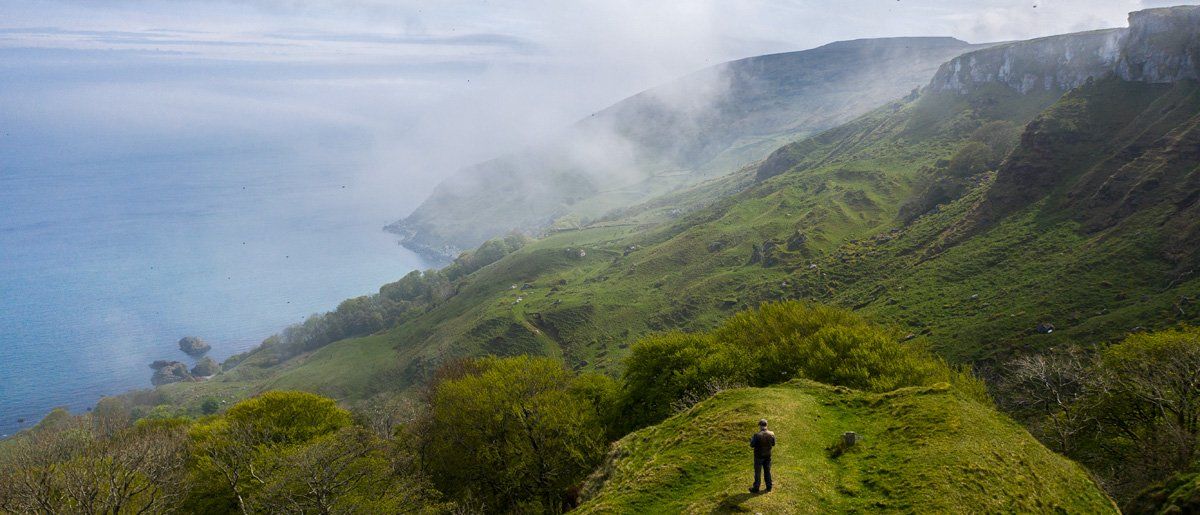You access Murlough Bay via the Torr Scenic Route, stop at the car park above the bay, from here you can walk down into the bay or along the cliff top to Fair Head. It is advisable to park at the top as the road down is narrow and steep, in summer when two cars meet it can cause a problem. The area is perfect for walking and cars just destroy the natural ambience plus they scare the wildlife. I have walked several times to Murlough Bay from Ballycastle via the shore path, many years ago, the joints are now more reluctant to engage such steep rock climbs. The route is extremely dangerous in places and requires experience, it is not a walk on a beach and over a few rocks, be well equipped (personal flare for emergencies), good footwear, rain gear, water, energy snack and a mobile phone are essential.
I follow the beach from Ballycastle to what is mistakingly known as Marconi's cottage, then on past the old coal mines to the end of the track, from here on it's a pad known as the Grey Man's Path to Fair Head, I cut up a track to the ridge about half a mile or so before McNulty's Door and then on along the plateau to Lough Dhu. The impressive vertical dolerite columns of Benmore (Fair Head) are surrounded by scree slopes which go down to the water's edge with boulders the size of house. On the cliff top linear scoring has created smooth glaciated rock revealing the source of this landscape, as the ice retreated some 10,000 years ago it formed the topography that we see today in the Glens of Antrim. Murlough Bay is known for its flora, fauna and geology, a curved limestone cliff protects one of the few remaining 'natural' temperate woodlands of Birch, Rowan and Hazel which thrives in a micro-climate in contrasts to the moor-like landscape of the plateau above.
As you follow the lane down from the car park, you will see a concrete plinth on the roadside with superb views over the bay and across to Scotland. This was a station of the cross on a pilgrim's way from the old Church of Drumnakill. The plinth is what remains of a more recent cross which was erected to commemorate
Sir Roger Casement who was tried and executed for treason, espionage and sabotage against the Crown. While waiting for execution in Pentonville prison he sent a letter to his cousin Gertrude Bannister in which he wrote 'Take my body back with you and let it lie in the old churchyard in Murlough Bay'. Casement was a frequent visitor to Ballycastle and found a close affinity to the beauty and wildness of Murlough Bay, a wonderful place for solitude and nature, buzzards and peregrine falcons hunt the cliff tops while eider ducks and fulmars skirt the waves past the ruins of the old Church of Drumnakill, nearby is the burial site of a saint.
The ruins closer to Fair Head are those of colliery cottages which date back to a time when coal was mined and shipped from the Bay, the last coal left here in the 1850s'. Lime was also extracted, you'll find old lime kilns on the shore and also on the top road just before you start to descend into Murlough. Fair Head is a majestic headland with vertical dolerite columns which rise 600 feet above sea level. From the top spectacular views can be had of Rathlin, Scotland and Murlough Bay. Fortunately you cannot drive there, it is a walk destination only either from Ballycastle, the Crannog or Murlough Bay. Those who take the time to walk to the headland will be rewarded with one of the most spectacular and inspiring vistas on the North Antrim coast.




